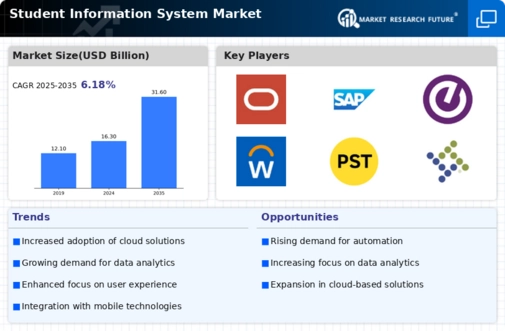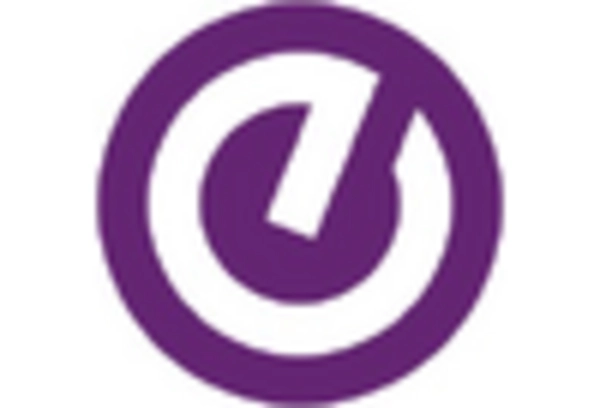Market Growth Projections
The Global Student Information System Market Industry is projected to experience substantial growth over the next decade. With a compound annual growth rate (CAGR) of 6.18% anticipated from 2025 to 2035, the market is expected to evolve significantly. By 2035, the market is forecasted to reach 31.6 USD Billion, reflecting the increasing reliance on technology in education. This growth is driven by various factors, including the rising demand for digital solutions, regulatory compliance, and the integration of advanced technologies. As educational institutions continue to invest in student information systems, the market is poised for a transformative phase that will redefine how educational data is managed and utilized.
Integration of Advanced Technologies
The integration of advanced technologies is a pivotal driver in the Global Student Information System Market Industry. Technologies such as artificial intelligence, machine learning, and blockchain are being incorporated into student information systems to enhance functionality and user experience. For instance, AI-driven analytics can provide insights into student performance, enabling educators to tailor interventions effectively. This technological evolution is anticipated to propel the market forward, with projections indicating a growth to 31.6 USD Billion by 2035. As institutions recognize the potential of these technologies to improve educational outcomes and operational efficiency, investment in sophisticated student information systems is likely to increase.
Regulatory Compliance and Data Security
Regulatory compliance and data security are paramount in the Global Student Information System Market Industry. Educational institutions are mandated to adhere to various regulations regarding student data privacy and security. As such, the demand for robust student information systems that ensure compliance with regulations like FERPA in the United States is increasing. Institutions are investing in systems that not only manage student records but also protect sensitive information from breaches. This focus on compliance is expected to drive market growth, as institutions prioritize systems that offer enhanced security features and ensure adherence to legal standards, thereby fostering trust among stakeholders.
Global Expansion of Educational Institutions
The global expansion of educational institutions is a significant driver in the Global Student Information System Market Industry. As educational institutions expand their reach internationally, there is a growing need for comprehensive student information systems that can manage diverse student populations and curricula. This trend is particularly evident in emerging markets, where the establishment of new schools and universities is on the rise. The demand for scalable and adaptable student information systems that can accommodate various educational models is likely to increase. This expansion not only enhances market opportunities but also necessitates the development of systems that can support multilingual and multicultural environments.
Growing Demand for Digital Learning Solutions
The Global Student Information System Market Industry experiences a robust growth trajectory, driven by the increasing demand for digital learning solutions. Educational institutions are increasingly adopting technology to enhance student engagement and streamline administrative processes. In 2024, the market is projected to reach 16.3 USD Billion, reflecting a significant shift towards digital platforms. This trend is likely to continue as schools and universities seek to improve operational efficiency and provide personalized learning experiences. The integration of advanced analytics and artificial intelligence into student information systems further supports this demand, allowing institutions to make data-driven decisions that enhance educational outcomes.
Increased Focus on Student-Centric Approaches
The Global Student Information System Market Industry is witnessing a paradigm shift towards student-centric approaches in education. Institutions are increasingly recognizing the importance of personalized learning experiences that cater to individual student needs. This shift is driving the demand for student information systems that facilitate customized learning paths and track student progress effectively. By leveraging data analytics, institutions can identify at-risk students and implement timely interventions. This focus on student-centricity is expected to contribute to the market's growth, as educational institutions strive to enhance student satisfaction and retention rates, ultimately leading to improved academic outcomes.

















Leave a Comment